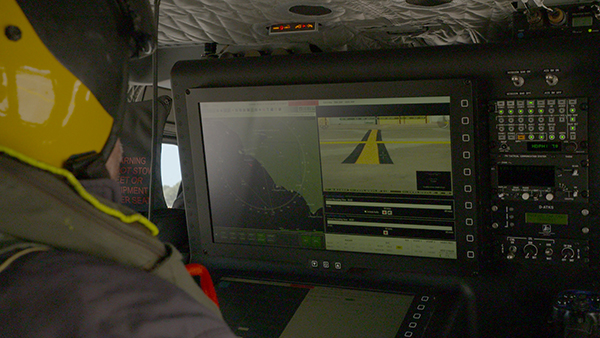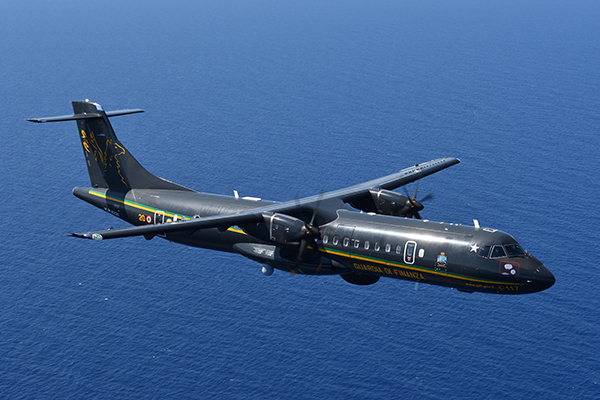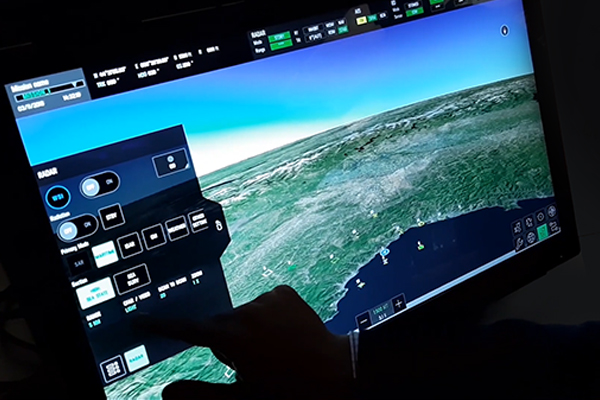15 February 2021
ATOS (Airborne Tactical Observation System) is an avionics system designed for the surveillance of vast areas on land and at sea. Acknowledged as a highly successful solution in its field, it has been adopted by customers across Europe, Africa and Australia with more than 60 of these systems installed on 10 different types of aircraft.
On-board helicopters, planes, or uncrewed systems, ATOS collects and integrates data from radar, electro-optical cameras and other sensors to present a clear, complete picture of the situation. Real-time merging of information from different sensors minimises the time and effort required to analyse and understand events underway in the area of interest. Full awareness of the situation is essential for making quick decisions in the Armed Forces, Police Forces or other governmental bodies.
 ATOS on rotary wing platform
ATOS on rotary wing platform
ATOS enables well-informed decision making through its integration into a wider surveillance network, accessing information collected by other aircraft and naval or ground units.
A vital tool in the fight against illegal activities on land and sea
These features make ATOS ideal for a great variety of missions ranging from prevention of illegal activities to border control, particularly coastal borders.
The pictures we see in the media of illegal migration and human trafficking often come from sensors installed on-board aircraft belonging to the Air Force, Customs Police or Coast Guard, collected with coordination by an ATOS suite.
The system’s modularity allows further expansion of its capacity for application in one of the world’s most complex missions: Anti-Submarine Warfare.
The continuation of criminal activity and the proliferation of symmetrical and asymmetrical threats, has led to steady growth in demand for security solutions over the years. Leonardo offers ATOS in Africa, Latin America and Southeast Asia – regions where the system often plays a critical role, using air surveillance to compensate for the lack of ground-based infrastructure and sensors.
One of the most important features of the system is that it can easily be integrated with any aircraft, whether new or already in operation. Leonardo also offers a complete ATOS package, delivering both aircraft and sensors. Examples include the family of ATR patrol aircraft (ATR-42/72MP, P-72A), manufactured by Leonardo and fitted with its own avionics solutions and sensors. This approach is becoming increasingly valuable since it is much easier for the customer to rely on a single supplier, who, as is the case of Leonardo, can also offer complete packages of post-sales services such as maintenance, training and upgrades.
 P72 Guardia di Finanza equipped with ATOS
P72 Guardia di Finanza equipped with ATOS
Ongoing technology investment
ATOS is a well proven system that is still in the vanguard in surveillance capability thanks to a continuous investment in development and updates.
Leonardo pays special attention to technical solutions that reduce operators’ workloads and stress, as modern patrol aircraft must be able to operate autonomously, with a multitude of sensors being constantly monitored, on missions lasting several hours.
The new operator workstations are designed to be much more comfortable and to present on-screen information in a much simpler, more intuitive manner (making use of windows and gestures that have now become familiar to all of us through smartphone use), so that the crew can continue to concentrate and remain efficient throughout the entire mission.
To further expand capacity for analysis and merging of information, ATOS will soon be able to use cloud technologies to draw on vast shared databases complementing information from on-board sensors.
 The new E-HMI -Enhanced Human Machine Interface- of ATOS
The new E-HMI -Enhanced Human Machine Interface- of ATOS
And ATOS has not finished evolving. The next step will be the introduction of Artificial Intelligence (AI). This technology will make it possible to process quantities of data unimaginable today, ensuring that the operator has real-time knowledge of the situation with an unprecedented degree of completeness.
The suite will become increasingly autonomous in analysis, allowing decision-makers to concentrate fully on what to do next. Data processing that takes several weeks now will, in the future, be completed within hours. The ATOS of the future will be connected to satellites, national and international databases, surveillance networks and, potentially, directly to the Combat Management System (CMS) aboard ships, another of Leonardo’s areas of excellence.
This project for growth and evolution revolves around constant contact between Leonardo and the customer, always offering the best solution for operators’ concepts of operation (CONOPS), requirements and ambitions.

